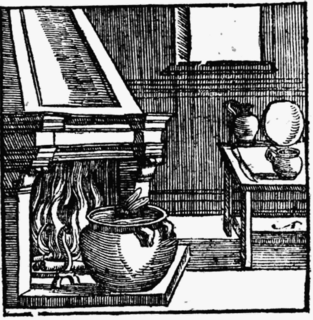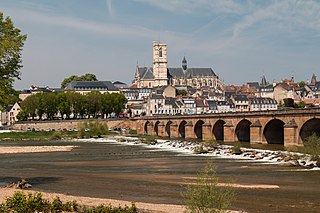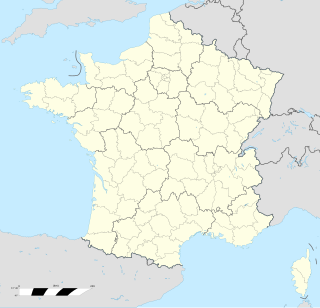
Jean de La Fontaine was a French fabulist and one of the most widely read French poets of the 17th century. He is known above all for his Fables, which provided a model for subsequent fabulists across Europe and numerous alternative versions in France, and in French regional languages.

Paul Fort was a French poet associated with the Symbolist movement. At the age of 18, reacting against the Naturalistic theatre, Fort founded the Théâtre d'Art (1890–93). He also founded and edited the literary reviews Livre d'Art with Alfred Jarry and Vers et Prose (1905–14) with poet Guillaume Apollinaire, which published the work of Paul Valéry and other important Symbolist writers. Fort is notable for his enormous volume of poetry, having published more than thirty volumes of ballads and, according to Amy Lowell for creating the polyphonic prose form in his 'Ballades francaises'.
Pierre Béarn was a French writer. He was born Louis-Gabriel Besnard in Bucharest, Romania.
Jean-Jacques François Marius Boisard was a French fabulist.
Jean-Louis Aubert, called the Abbé Aubert, was a French dramatist, poet and journalist, son of the violinist and composer Jacques Aubert (1686-1753) and brother of Louis Aubert (painter). Aubert was educated at the Collège de Navarre and entered the order. In 1741, Aubert entered the editorial staff of the Affiches Annonces et Avis Divers, where he was literary critic. In 1752, he created the Affiches et Annonces de Province. He opposed the encyclopedists.

André Spire was a French poet, writer, and Zionist activist.

Francis Jammes was a French poet. He spent most of his life in his native region of Béarn and the Basque Country and his poems are known for their lyricism and for singing the pleasures of a humble country life. His later poetry remained lyrical, but also included a strong religious element brought on by his "conversion" to Catholicism.

Kenneth White is a Scottish poet, academic and writer.
Laurentius Abstemius was an Italian writer and professor of philology, born at Macerata in Ancona. His learned name plays on his family name of Bevilaqua (Drinkwater), and he was also known by the Italian name Lorenzo Astemio. A Neo-Latin writer of considerable talents at the time of the Humanist revival of letters, his first published works appeared in the 1470s and were distinguished by minute scholarship. During that decade he moved to Urbino and became ducal librarian, although he was to move between there and other parts of Italy thereafter as a teacher.

G. Albert Aurier was a French poet, art critic and painter, devoted to Symbolism.
Tristan Klingsor, birth name Léon Leclère, was a French poet, musician, painter and art critic, best known for his artistic association with the composer Maurice Ravel.

Vénus Khoury-Ghata is a French-Lebanese writer. In 1959, she was Miss Beirut. She married French researcher Jean Ghata. She collaborated on Europe magazine, directed by Louis Aragon, translating it into Arabic with other poets. She has lived in Paris since 1972 and has published several novels and collections of poems.
André Fontainas (1865–1948) was a Belgian Symbolist poet and critic. He was born in Brussels. He spent much of his life in France. He taught at Lycee Fontaines. He was a member of the Académie Mallarmé.

Jean de La Fontaine collected fables from a wide variety of sources, both Western and Eastern, and adapted them into French free verse. They were issued under the general title of Fables in several volumes from 1668 to 1694 and are considered classics of French literature. Humorous, nuanced and ironical, they were originally aimed at adults but then entered the educational system and were required learning for school children.
Paul Léautaud was a French writer and theater critic for Mercure de France, signing his often caustic reviews with the pseudonym Maurice Boissard.
Paterne Berrichon - the pseudonym of Pierre-Eugène Dufour, born 10 January 1855 at Issoudun and died 30 July 1922 at La Rochefoucauld - was a French poet, painter, sculptor and designer. He is best known as husband of Isabelle Rimbaud, and the brother-in-law and publisher of Arthur Rimbaud.
Jean-Baptiste-Christophe Grainville was an 18th-century French poet.

The Spiritual Hunt is a prose poem purportedly written by French writer Arthur Rimbaud, claimed to be his masterpiece by his friend and lover Paul Verlaine. Supposedly strongly resembling in form the only book he published during his lifetime, A Season in Hell, the poem is considered to be one of the most famous lost artworks. Even though in 1949, a twelve-page work by the same title was unveiled to the public by Pascal Pia; Rimbaud scholars, almost unanimously, have denounced this poem as a literary forgery.

The story of the fly that fell into the soup while it was cooking was a Greek fable recorded in both verse and prose and is numbered 167 in the Perry Index. Its lesson was to meet adverse circumstances with equanimity, but it was little recorded after Classical times.












